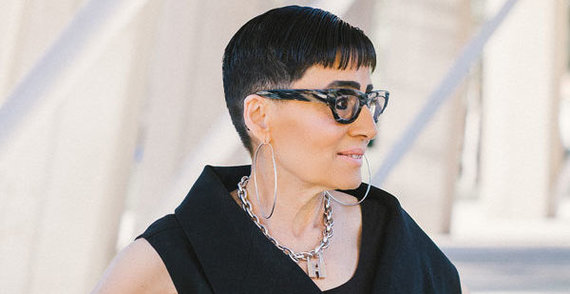25 Faces 25 Years: Zee Hakimoglu
By Amy Weaver
K. Sperry Photography
 Zee Hakimoglu, MS ’79, President, CEO and Chairman of the Board, ClearOne
Zee Hakimoglu, MS ’79, President, CEO and Chairman of the Board, ClearOne
June 15, 2017
Zee Hakimoglu’s first laboratory was a rock under a makeshift fort that she and her sisters built alongside a small creek at her family’s home in New Jersey. Hakimoglu, then 11 or 12 years old, spent her days and evenings at the water’s edge, studying the spiders and wondering about the constellations.
“I had a very keen interest in nature in a scientific sense,” she says. “Growing up with sisters, no one ever said, ‘The boys go on to school and science careers and the girls do this or that.’ I had no door closed. It was at that time that science became a real possibility for me.”
In the flower power days of the late ’60s, Hakimoglu’s family relocated to Los Angeles. Those were her high school years, a time when she and her twin sister would occasionally choose the beach over the classroom.
“I was not necessarily the best student,” she says, “but I did manage to do very well in my senior year, and once I got to college, I straightened out.”
After graduating with her bachelor’s degree in physics from California State College, Sonoma, and her master’s in physics from Drexel, Hakimoglu accepted an associate engineering position at aerospace and defense giant Lockheed Martin, in their Silicon Valley office.
Communication theory became her focus after that first job at Lockheed — solving broad conceptual problems related to the transmitting of information. It’s a focus that has found its way into every position she’s held since, including more than 25 years of executive management roles in business development, product development and product marketing at a number of publicly traded technology firms.
For the last 12 years, Hakimoglu has served as president, CEO and chairman of the board for ClearOne, a communications company specializing in audio and video conferencing systems and products.
“Whether in wireless, fiber optics or conferencing, I’ve worked at the systems level throughout my career, dealing with audio, video and data,” she says. “Today, it’s all digitized, and digitized data has to be compressed to be sent over networks. There are lots of theoretical methods and processes on how this is done so that you don’t lose quality or use too much bandwidth. It’s very interesting work and in some ways, it’s very physics-oriented; these are macro-systems that have a life and rules of their own. You keep exploring and extending those rules to see what you can do to get more information reliably from point A to point B.”
In fact, Hakimoglu says, her physics degree from Drexel provided some of the best training for the work she does today.
“Physics encourages big-picture problem solving. You take a complex problem or system and boil it down to its most simple, fundamental elements,” she says. “You learn that you have to be self-reliant, to have confidence in your ability to solve complex problems, to not be afraid of making mistakes, and to think creatively but with discipline. Physics also encourages innovation, and that’s what I do now — I’m here to solve problems with novel solutions.”
Hakimoglu’s lessons in innovation and leadership actually began long ago though, long before her first physics classes, when she was a young girl watching her father start and run two successful electronic telecommunications companies.
“My father was one of a kind,” Hakimoglu says with fondness. “He was what we call an entrepreneur today, but without the venture capital funding. He never told us what to do with our lives. Instead, he would say, ‘Even if you end up digging a ditch, then dig it well, as others are depending on you to do so.’”
With the encouragement of her father and the support of bosses and colleagues along the way, Hakimoglu has found success in a largely male-dominated industry.
“When I worked at Lockheed, I had a wonderful but tough boss,” she says. “He sent me on a trip as a junior engineer to do a software upgrade on a nuclear submarine. I was so green behind the ears, I didn’t know what was happening, but he had expectations of me and I worked hard to meet them. He helped by giving me a chance. That’s all you can ask for — to get a fair chance.”
Although she says she still felt pressure to be better, to work harder, to bounce back quicker than her male counterparts, she learned to be resilient in the process. More importantly, she learned never to see her gender as a weakness.
“I think that women in science and technology should not lose their femininity or their female instincts — their compassion, their artistry, their creativity,” she says. “You should not suppress it but instead use it to empower you. If you do what you like and stay true to yourself, your sense of accomplishment and achievement will follow.”
This article originally appeared in the College of Arts and Sciences' Ask magazine feature story, "25 Faces, 25 Years." For more Ask stories, visit askmagazine.org.